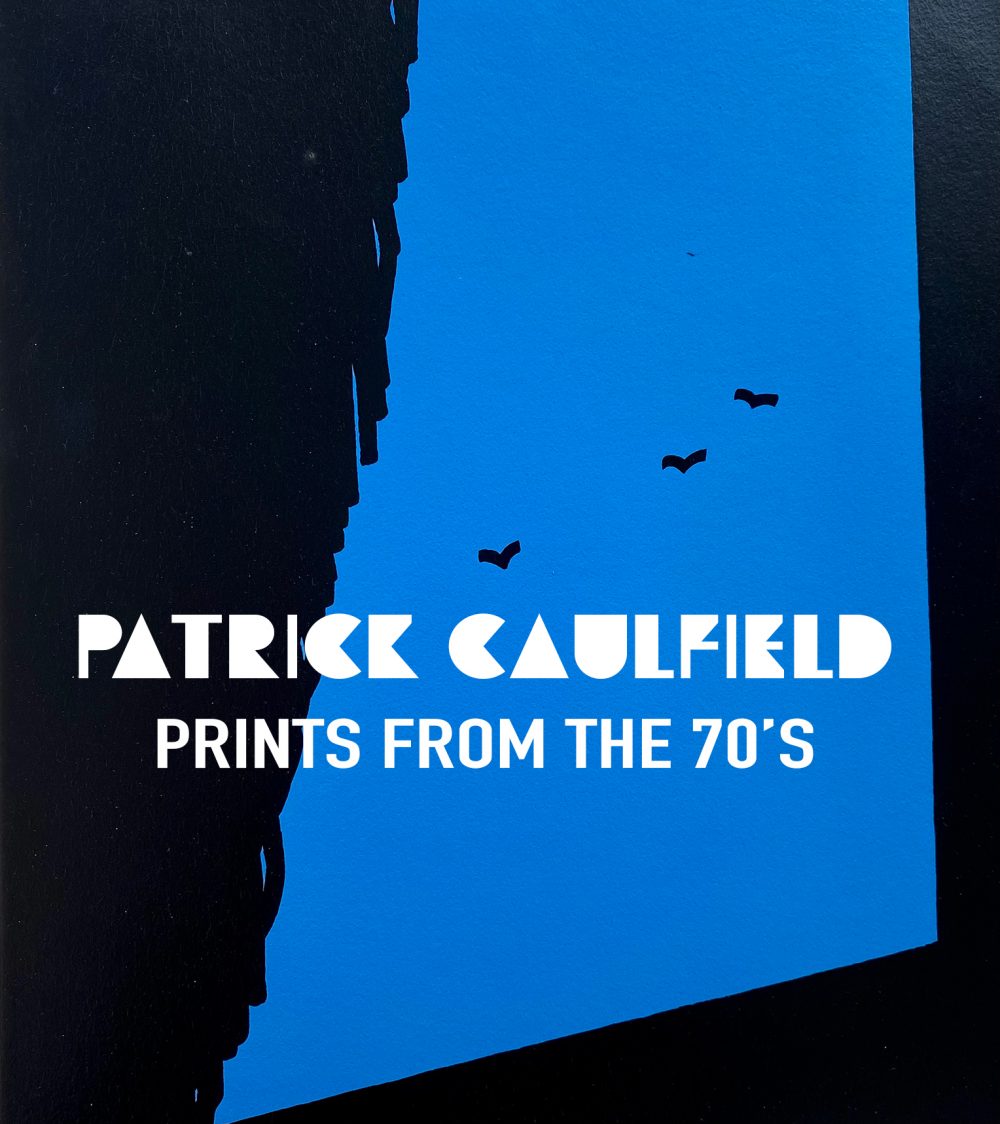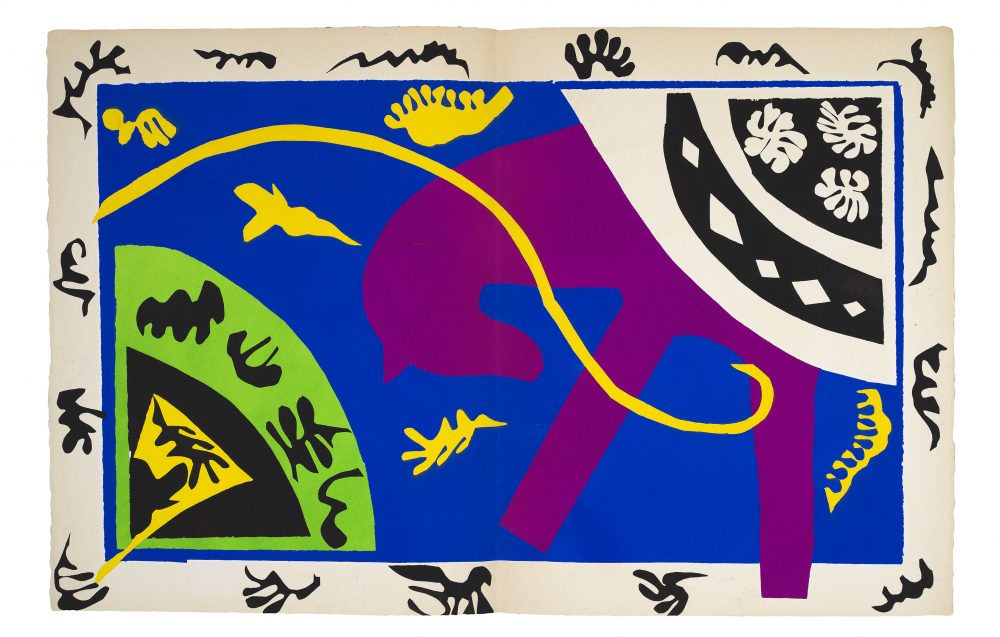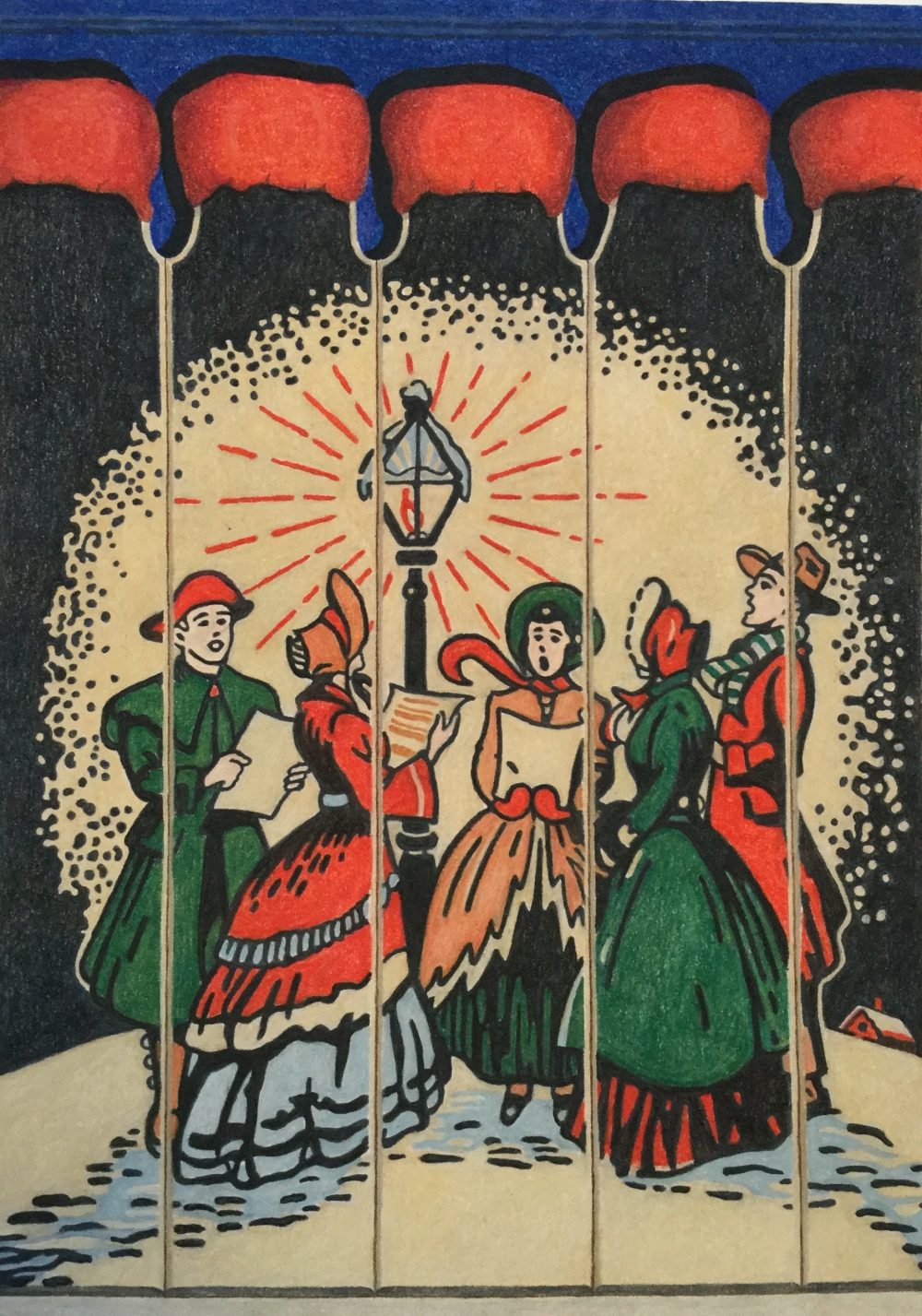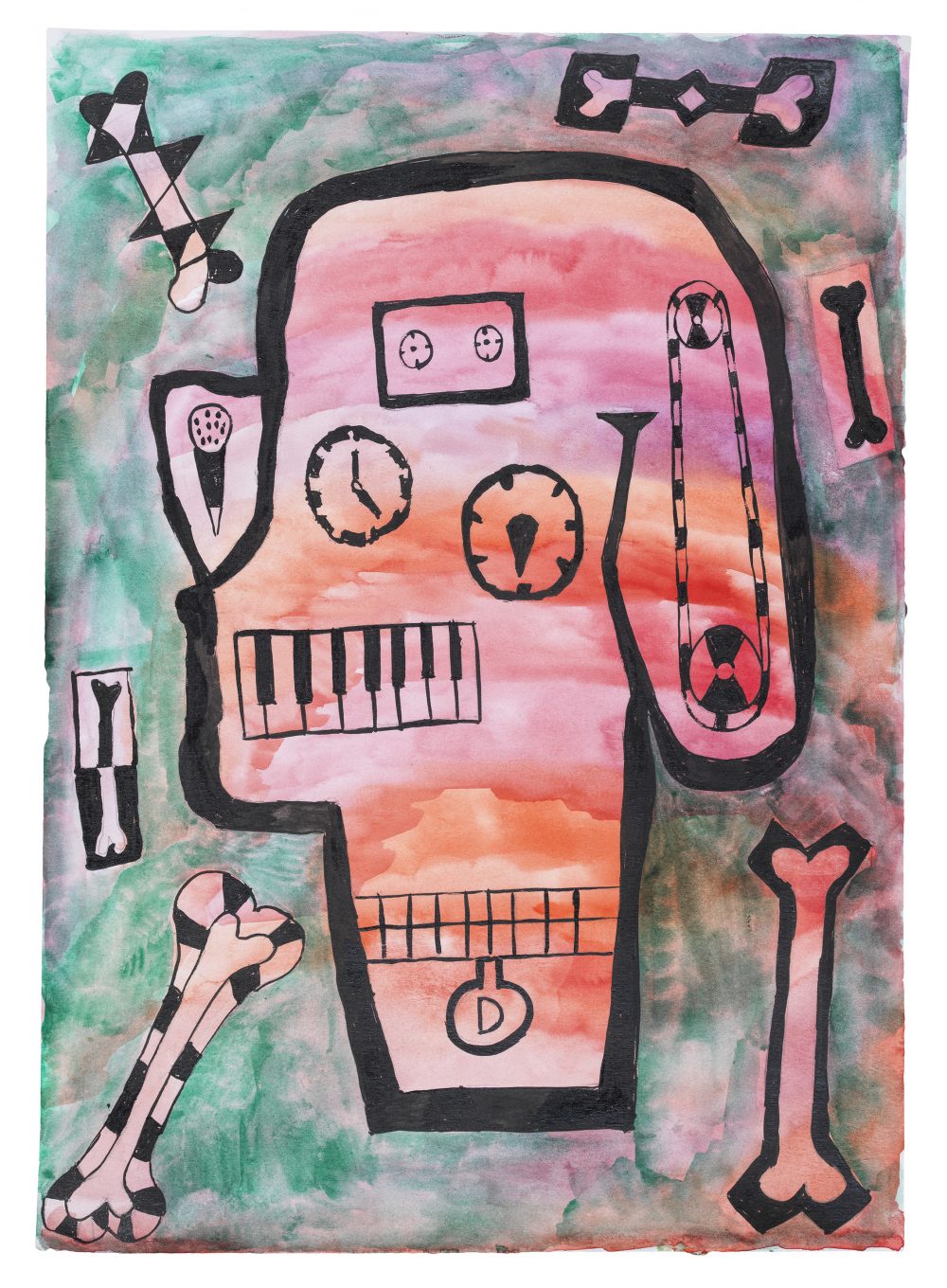Thank you for your enquiry
We will be in touch shortly.
Roberto Matta
Inner Landscapes
9th September - 9th October 2020
Online Only
Roberto Matta (1911 – 2002) is one of Chile’s most important painters and a seminal figure of Surrealism, having influenced the development of Abstract Expressionism. He was an artist, architect and progressive thinker. Matta’s early work reflects dream-like, inner worlds and his later compositions reflect the psychological damage caused by Europe’s ongoing wars and later the Vietnam War. Shifting biomorphic shapes, vivid colours and apocalyptic scenes imbued with confusion and angst appear in Matta’s work. His exploration of automatism and free association following Surrealist principles had a lasting impact on the development of the Abstract Expressionists.
Matta created over four hundred prints during his lifetime, from 1943 to 2002. We are delighted to present a selection of prints from the 1960s and 1970s and two drawings from the 1950s.

Etching with aquatint printed in colours, 1962.
Plate 1 from Scènes familières.
Signed in pencil, from the edition of 50.
Printed on Arches wove paper by Atelier Georges Visat, Paris. Published by Editions Galerie Le Point Cardinal, Paris.
(Sabatier 86)
Plate: 33.6 x 43.3 cm.
Sheet: 49.9 x 65 cm.
“I was interested in other spaces to do with forms drawn from non-Euclidean geometry and the idea of entering these spaces. These structures do not rely on the sense of space, as we know it. It is a space without limits and which transforms itself in time – a mutant space. It is the same thing with a representation of a fly’s eye, or rather the way in which a fly sees us. What it sees certainly does not resemble what we see. We are transformed in the fly’s vision. It is not a photo. And in the eye of the rhinoceros, in the eye of the serpent or in the eye of the squirrel, we are, no doubt, also different. We do not know this but it interests me to imagine it.”
– Roberto Matta, in conversation with Hans Ulrich Obrist, April 2001
Etching with aquatint printed in colours, 1965.
Plate 1 from Série Or.
Signed in pencil, from the edition of 50.
Printed on Arches wove paper and published by by Atelier Georges Visat, Paris.
(Sabatier 130)
Plate: 37.5 x 47.2 cm.
Sheet: 50 x 66 cm.
Etching with aquatint printed in colours, 1969.
Signed in pencil, from the edition of 99.
Printed on Arches wove paper by Atelier Georges Visat, Paris.
Published by Editions L’Oeuvre Gravée, Bern in 1970.
(Sabatier 214)
Plate: 41.1 x 54.6 cm.
Sheet: 56.7 x 76 cm.
Matta was born in Chile, though with French, Spanish and Basque roots. After training in Santiago as an architect, he left for Europe in 1933, travelling and absorbing art in the galleries of Italy, Russia, Spain and England. His travels to Europe and American led to his encounters with Arshile Gorky, René Magritte, Salvador Dalí, André Breton and Le Corbusier. He worked as a draughtsman in the office of Le Corbusier from 1934 to 1937, where his originality and imagination were said – by his surrealist friends – to have startled his employer. Matta started making his first drawings in 1937 and by the time he had left Le Corbusier’s studio, it was as an artist fully engaged with the notions of Surrealism. He joined the French surrealist group under the encouragement of the movement’s founder André Breton.
Etching with aquatint printed in colours, 1968.
Signed in pencil, an artist’s proof aside from the numbered edition of 95.
Printed on Arches wove paper by Atelier Georges Visat, Paris. Published by Editions L’Oeuvre Gravée, Bern.
(Sabatier 199).
Plate: 54.7 x 35 cm.
Sheet: 76 x 56.5 cm.
Etching with aquatint printed in colours, 1968.
Signed in pencil, numbered from the edition of 95.
Printed on Arches wove paper by Atelier Georges Visat, Paris. Published by Editions L’Oeuvre Gravée, Bern.
(Sabatier 200)
Plate: 55 x 41.6 cm.
Sheet: 76.2 x 56.8 cm.
At the outbreak of the Second World War, he – along with an influential group of surrealists that included Max Ernst, Wilfredo Lam, Yves Tanguy and André Masson – found refuge in America. His first exhibitions made an impact on the New York gallery scene through his dynamic and distinctive style of surrealism. Along with Max Ernst, he began working with Art of the Century, Peggy Guggenheim’s influential gallery. It was here that he developed a friendship with Robert Motherwell.
“[Roberto Matta] was the most energetic, enthusiastic, poetic, charming, brilliant young artist that I’ve ever met. [..] He gave me a ten year education in surrealism.”
– Robert Motherwell
Etching with aquatint printed in colours, 1971.
From Droites Libérées, a series which illustrated a poem by Henri Michaux.
Signed in pencil, numbered in Roman numerals from XXV.
From the suite on Japon nacré paper (the total edition was 125 copies on Arches and 125 on Japon nacré paper).
Printed and published by Georges Visat, Paris.
(Sabatier 279)
Plate: 21.8 x 15.8 cm.
Sheet: 43.5 x 31.5 cm.
Etching with aquatint printed in colours, 1971.
From Droites Libérées, a series which illustrated a poem by Henri Michaux.
Signed in pencil, numbered in Roman numerals from XXV.
From the suite on Japon nacré paper (the total edition was 125 copies on Arches and 125 on Japon nacré paper).
Printed and published by Georges Visat, Paris.
(Sabatier 284)
Plate: 27.8 x 18.8 cm.
Sheet: 44 x 31.5 cm.
Etching with aquatint printed in colours, 1967.
Plate 5 from Judgements.
Signed in pencil, from the edition of 100.
Printed on Arches wove paper by Atelier Georges Visat, Paris. Published by Blue Moon Gallery, New York.
(Sabatier 178)
Plate: 42 x 55 cm.
Sheet: 50.2 x 66.2 cm.
Etching with aquatint printed in colours, 1967.
Plate 1 from Judgements.
Signed in pencil, from the edition of 100.
Printed on Arches wove paper by Atelier Georges Visat, Paris. Published by Blue Moon Gallery, New York.
(Sabatier 174)
Plate: 41.7 x 54.7 cm.
Sheet: 50 x 66 cm.
Etching with aquatint printed in colours, 1967.
Plate 3 from Judgements.
Signed in pencil, from the edition of 100.
Printed on Arches wove paper by Atelier Georges Visat, Paris. Published by Blue Moon Gallery, New York.
(Sabatier 176)
Plate: 41.6 x 55 cm.
Sheet: 50 x 62 cm.
Etching with aquatint printed in colours, 1967.
Plate 4 from Judgements.
Signed in pencil, from the edition of 100.
Printed on Arches wove paper by Atelier Georges Visat, Paris. Published by Blue Moon Gallery, New York.
(Sabatier 177)
Plate: 41.6 x 55 cm.
Sheet: 50 x 66.2 cm
Etching with aquatint printed in colours, 1965.
Signed in pencil, from the edition of 100.
Printed on Arches wove paper by Atelier Georges Visat, Paris. Published by Editions L’Oeuvre Gravée, Bern.
(Sabatier 129)
Plate: 23.5 x 31 cm.
Sheet: 65.5 x 50 cm.
Etching with aquatint printed in colours, 1971.
Signed in pencil, from the edition of 85.
Printed on Arches wove paper and published by Georges Visat, Paris.
(Sabatier 266)
Plate: 23.8 x 17.7 cm.
Sheet: 38.2 x 28.3 cm.
Etching with aquatint printed in colours, 1968.
Signed in pencil, from the edition of 85.
Printed on Lana wove paper and published by Georges Visat, Paris. (Sabatier 194)
Plate: 42 x 32.7 cm.
Sheet: 66.8 x 50.9 cm.
The complete portfolio comprising six lithographs, each signed and numbered in pencil from the edition of 20. Each with additional hand-colouring by Matta and signed again in colour crayon. Including the additional leaf with justification and colophon. Loose as issued, in original publisher’s black cloth portfolio with flaps, reproduction of Matta’s signature in various colours to upper cover, titles in colour to spine. Each sheet printed on Rives BFK paper by Tamarind Lithography Workshop, Los Angeles. Published by Minneapolis School of Art, Minneapolis.
This copy is number one (one of only two copies with all of the lithographs with additional hand-colouring and colour crayon signature by the artist).
Each sheet: 76.2 x 55.9 cm.
Overall portfolio: 77 x 57 cm.
In 1948, Matta returned to Europe and parted ways with the Surrealist group. After spending time in Rome, he settled in Paris in 1954. During the 1960s and 1970s, Matta travelled extensively in Africa and South America.
Matta’s works can be found in many of the world’s most important museums. After his first retrospective at the Museum of Modern Art, New York, in 1957, retrospectives at the Centre Pompidou, Paris, and the Reina Sofia, Madrid, followed in 1985 and 1999, respectively. The San Diego Museum of Art exhibited Matta’s work with that of his son, Gordon Matta-Clark in a father-son exhibition in 2006.
Pencil and crayon on paper, circa late 1950s.
Signed and in pencil at lower right.
Provenance: formerly in the the collection of American abstract sculptor Dimitri Hadzi (1921-2006), who was friends with the artist; thence by descent.
This drawing relates to a sculpture made by Roberto Matta in collaboration with the sculptor Dimitri Hadzi (1921 – 2006) in the late 1950s. Together they assembled a sculpture from found objects – such as twigs – in Hadzi’s Rome studio. It was later cast into bronze (pictured below).


Pencil and crayon on paper, circa late 1950s.
Signed in pencil at lower right.
Inscribed ‘Que principio a abrir los ojos‘ (‘Where to start when you open your eyes’) in pencil at lower centre.
Provenance: formerly in the collection of American abstract sculptor Dimitri Hadzi (1921-2006), who was friends with the artist; thence by descent.
Just before his death in April of 2001, at the age of 91, Roberto Matta gave curator Hans Ulrich Obrist one of his final interviews. Here the Surrealist discusses ideas ranging from chance, dreams, resistance and a new geometry to Le Corbusier, scroungers and a return to Marx. Read the interview here.
Available Works
Pencil and crayon on paper, circa late 1950s.
Signed and in pencil at lower right.
Provenance: formerly in the the collection of American abstract sculptor Dimitri Hadzi (1921-2006), who was friends with the artist; thence by descent.
This drawing relates to a sculpture made by Roberto Matta in collaboration with the sculptor Dimitri Hadzi (1921 – 2006) in the late 1950s. Together they assembled a sculpture from found objects – such as twigs – in Hadzi’s Rome studio. It was later cast into bronze (pictured below).
Pencil and crayon on paper, circa late 1950s.
Signed in pencil at lower right.
Inscribed ‘Que principio a abrir los ojos‘ (‘Where to start when you open your eyes’) in pencil at lower centre.
Provenance: formerly in the collection of American abstract sculptor Dimitri Hadzi (1921-2006), who was friends with the artist; thence by descent.
Etching with aquatint printed in colours, 1962.
Plate 1 from Scènes familières.
Signed in pencil, from the edition of 50.
Printed on Arches wove paper by Atelier Georges Visat, Paris. Published by Editions Galerie Le Point Cardinal, Paris.
(Sabatier 86)
Plate: 33.6 x 43.3 cm.
Sheet: 49.9 x 65 cm.
Etching with aquatint printed in colours, 1965.
Plate 1 from Série Or.
Signed in pencil, from the edition of 50.
Printed on Arches wove paper and published by by Atelier Georges Visat, Paris.
(Sabatier 130)
Plate: 37.5 x 47.2 cm.
Sheet: 50 x 66 cm.
Etching with aquatint printed in colours, 1969.
Signed in pencil, from the edition of 99.
Printed on Arches wove paper by Atelier Georges Visat, Paris.
Published by Editions L’Oeuvre Gravée, Bern in 1970.
(Sabatier 214)
Plate: 41.1 x 54.6 cm.
Sheet: 56.7 x 76 cm.
The complete portfolio comprising six lithographs, each signed and numbered in pencil from the edition of 20. Each with additional hand-colouring by Matta and signed again in colour crayon. Including the additional leaf with justification and colophon. Loose as issued, in original publisher’s black cloth portfolio with flaps, reproduction of Matta’s signature in various colours to upper cover, titles in colour to spine. Each sheet printed on Rives BFK paper by Tamarind Lithography Workshop, Los Angeles. Published by Minneapolis School of Art, Minneapolis.
This copy is number one (one of only two copies with all of the lithographs with additional hand-colouring and colour crayon signature by the artist).
Each sheet: 76.2 x 55.9 cm.
Overall portfolio: 77 x 57 cm.
Etching with aquatint printed in colours, 1968.
Signed in pencil, an artist’s proof aside from the numbered edition of 95.
Printed on Arches wove paper by Atelier Georges Visat, Paris. Published by Editions L’Oeuvre Gravée, Bern.
(Sabatier 199).
Plate: 54.7 x 35 cm.
Sheet: 76 x 56.5 cm.
Etching with aquatint printed in colours, 1968.
Signed in pencil, numbered from the edition of 95.
Printed on Arches wove paper by Atelier Georges Visat, Paris. Published by Editions L’Oeuvre Gravée, Bern.
(Sabatier 200)
Plate: 55 x 41.6 cm.
Sheet: 76.2 x 56.8 cm.
Etching with aquatint printed in colours, 1971.
From Droites Libérées, a series which illustrated a poem by Henri Michaux.
Signed in pencil, numbered in Roman numerals from XXV.
From the suite on Japon nacré paper (the total edition was 125 copies on Arches and 125 on Japon nacré paper).
Printed and published by Georges Visat, Paris.
(Sabatier 279)
Plate: 21.8 x 15.8 cm.
Sheet: 43.5 x 31.5 cm.
Etching with aquatint printed in colours, 1971.
From Droites Libérées, a series which illustrated a poem by Henri Michaux.
Signed in pencil, numbered in Roman numerals from XXV.
From the suite on Japon nacré paper (the total edition was 125 copies on Arches and 125 on Japon nacré paper).
Printed and published by Georges Visat, Paris.
(Sabatier 284)
Plate: 27.8 x 18.8 cm.
Sheet: 44 x 31.5 cm.
Etching with aquatint printed in colours, 1968.
Signed in pencil, from the edition of 85.
Printed on Lana wove paper and published by Georges Visat, Paris. (Sabatier 194)
Plate: 42 x 32.7 cm.
Sheet: 66.8 x 50.9 cm.
Etching with aquatint printed in colours, 1965.
Signed in pencil, from the edition of 100.
Printed on Arches wove paper by Atelier Georges Visat, Paris. Published by Editions L’Oeuvre Gravée, Bern.
(Sabatier 129)
Plate: 23.5 x 31 cm.
Sheet: 65.5 x 50 cm.
Etching with aquatint printed in colours, 1971.
Signed in pencil, from the edition of 85.
Printed on Arches wove paper and published by Georges Visat, Paris.
(Sabatier 266)
Plate: 23.8 x 17.7 cm.
Sheet: 38.2 x 28.3 cm.
Etching with aquatint printed in colours, 1967.
Plate 1 from Judgements.
Signed in pencil, from the edition of 100.
Printed on Arches wove paper by Atelier Georges Visat, Paris. Published by Blue Moon Gallery, New York.
(Sabatier 174)
Plate: 41.7 x 54.7 cm.
Sheet: 50 x 66 cm.
Etching with aquatint printed in colours, 1967.
Plate 3 from Judgements.
Signed in pencil, from the edition of 100.
Printed on Arches wove paper by Atelier Georges Visat, Paris. Published by Blue Moon Gallery, New York.
(Sabatier 176)
Plate: 41.6 x 55 cm.
Sheet: 50 x 62 cm.
Etching with aquatint printed in colours, 1967.
Plate 5 from Judgements.
Signed in pencil, from the edition of 100.
Printed on Arches wove paper by Atelier Georges Visat, Paris. Published by Blue Moon Gallery, New York.
(Sabatier 178)
Plate: 42 x 55 cm.
Sheet: 50.2 x 66.2 cm.
Etching with aquatint printed in colours, 1967.
Plate 4 from Judgements.
Signed in pencil, from the edition of 100.
Printed on Arches wove paper by Atelier Georges Visat, Paris. Published by Blue Moon Gallery, New York.
(Sabatier 177)
Plate: 41.6 x 55 cm.
Sheet: 50 x 66.2 cm

David Hockney
David Hockney Will Come
3rd - 24th October 2023
Online Exhibition

Ana Andreeva
IN CONTEXT
10.07.2023 - 10.08.2023




Pablo Picasso
La Célestine

Joan Miró: Works from Album 19
8th March - 5th April 2022

Henry Moore
Sculptural Ideas
3rd February - 3rd March 2022

Sam Francis
Poèmes dans le Ciel (Poems in the Sky)
17th January - 21st February 2022

Allen Jones
A Fleet of Buses
1st November - 26th November
Online only

Pop Art in Print
2 - 30th August 2021
Online Exhibition

Aaron Kasmin
Always a Show
16th September - 28th October 2021

Gerald Laing
Reclining Figure Relief Painting
Viewing Room

Chihuly
22nd July - 5th September 2021
Online Only

Henri Matisse
Jazz
20th May - 13th June 2021
Online only

Eileen Cooper
Nights at the Circus
4th March - 14th May 2021

Henry Moore
The Art of Poetry
26th January - 26th February 2021
Online Only

Curated highlights from Emily Tobin
Ring out, wild bells
10th December 2020 - 2nd January 2021
Online only

Ellsworth Kelly
Back to Nature
27th November - 20th December 2020
Online Exhibition

Declan Jenkins
Cinema of lava, cinema of mercury
12th November - 13th December 2020
Online Exhibition with Highlights at the Gallery

Paula Scher
All Over the Map
9th October - 8th November 2020
Online Exhibition


















